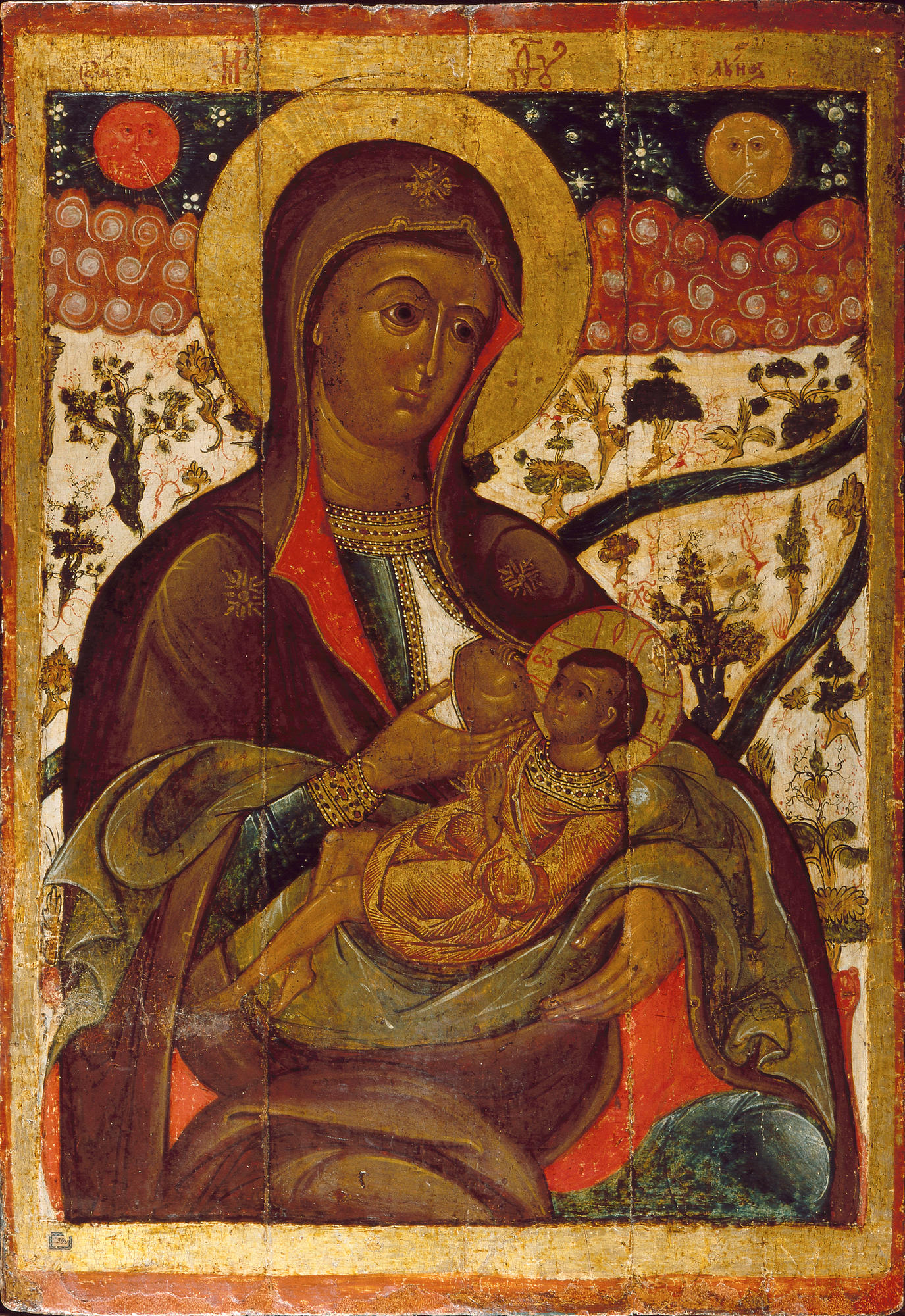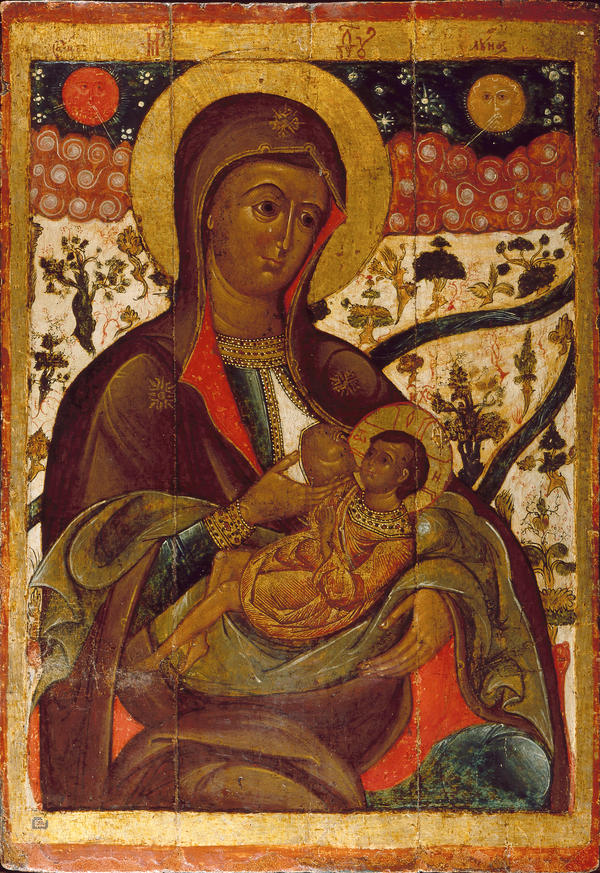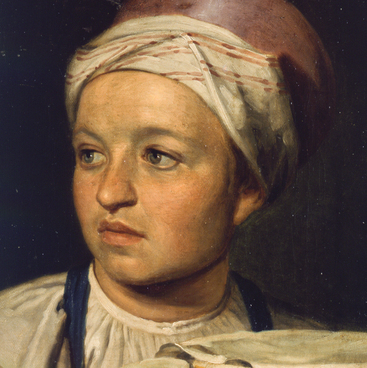The link to Byzantine art is clear in Russian icon painting. After adoption of Christianity in the late 10th century, samples of Byzantine icons appeared in Russia. They became not only objects of worship, but also showpieces. However, we cannot call Russian icon painting merely a branch of Byzantine school. In Russia, icon painting developed autonomously starting from the 12th century already.
The features accumulated for centuries gradually transformed into new quality and acquired national identity. This was a lengthy process and it is difficult to mark its chronological limits.
Northern schools of icon painting are of special interest for art experts from the point of view of national identity. They developed in Karelia, Vyatka, Kargopol, Vologda and Arkhangelsk regions.
The art of Northern Russia formed in special historic conditions: descendants from Novgorod and Central Russia were squatting the deserted northern lands. Hence, in the 13th – 16th centuries the artists of those regions were oriented towards the cultural traditions of major Russian cities: Rostov, Moscow and Novgorod. Many pieces dated to those times provide such evidence.
One of such pieces is The Galaktotrophousa (the icon depicting the Mother of God Nursing the Child) presented in the museum collection created by an unknown artist in the 18th century.
The worship of The Galaktotrophousa is one of the earliest in Christianity. Archeologists found similar images of the Holy Lady on a fresco painting on the wall of Priscilla Rome catacombs dating back to the second half of the 2nd century. This is simultaneously the earliest depiction of such subject and the oldest currently known image of Virgin Mary.
This subject became known in Russia starting from the 14th and the 15th centuries, but they received wider dissemination in the 17th century с XIV–XV under the influence of Italian painting. The artist depicted the Mother of God sitting solemnly on a throne. The holds little Christ with her both hands on her knees, and he is suckling from her breast. Trees, the Sun and the Moon in the clouds are behind the Virgin symbolizing the Garden of Eden.
The depiction of The Galaktotrophousa clearly demonstrates the features common for the northern schools of icon painting: unsophistication and folk character of images, simplicity of subjects and of the style of their depiction. The specificity of northern icons was in the fact, that not only the clergy painted them, but simple peasants as well. They often imitated the artists from major Novgorod and Vologda workshops, and learned from each other. In the faces of the saints there was a resemblance to peasant types, and in ornaments, poses and draperies - simplification, larger forms and straight, sharp lines.
The features accumulated for centuries gradually transformed into new quality and acquired national identity. This was a lengthy process and it is difficult to mark its chronological limits.
Northern schools of icon painting are of special interest for art experts from the point of view of national identity. They developed in Karelia, Vyatka, Kargopol, Vologda and Arkhangelsk regions.
The art of Northern Russia formed in special historic conditions: descendants from Novgorod and Central Russia were squatting the deserted northern lands. Hence, in the 13th – 16th centuries the artists of those regions were oriented towards the cultural traditions of major Russian cities: Rostov, Moscow and Novgorod. Many pieces dated to those times provide such evidence.
One of such pieces is The Galaktotrophousa (the icon depicting the Mother of God Nursing the Child) presented in the museum collection created by an unknown artist in the 18th century.
The worship of The Galaktotrophousa is one of the earliest in Christianity. Archeologists found similar images of the Holy Lady on a fresco painting on the wall of Priscilla Rome catacombs dating back to the second half of the 2nd century. This is simultaneously the earliest depiction of such subject and the oldest currently known image of Virgin Mary.
This subject became known in Russia starting from the 14th and the 15th centuries, but they received wider dissemination in the 17th century с XIV–XV under the influence of Italian painting. The artist depicted the Mother of God sitting solemnly on a throne. The holds little Christ with her both hands on her knees, and he is suckling from her breast. Trees, the Sun and the Moon in the clouds are behind the Virgin symbolizing the Garden of Eden.
The depiction of The Galaktotrophousa clearly demonstrates the features common for the northern schools of icon painting: unsophistication and folk character of images, simplicity of subjects and of the style of their depiction. The specificity of northern icons was in the fact, that not only the clergy painted them, but simple peasants as well. They often imitated the artists from major Novgorod and Vologda workshops, and learned from each other. In the faces of the saints there was a resemblance to peasant types, and in ornaments, poses and draperies - simplification, larger forms and straight, sharp lines.



